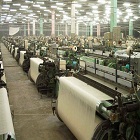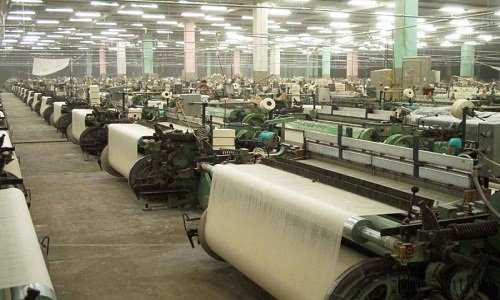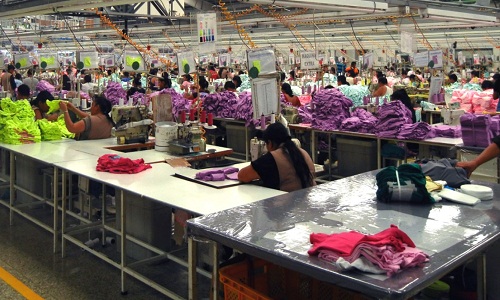"The Indian textile and apparels industry employs 105 million people directly and indirectly and has a potential to create 50 million more jobs by 2025, holding the key to growing unrest over India's inability to create the millions of jobs it needs every month. However, due to rising skills gap, falling exports, low productivity, ever increasing debt and low foreign investment the targets set by the textile sector of additional $30 billion in exports and 10 million additional jobs over the next three years is being jeopardised."

The Indian textile and apparels industry employs 105 million people directly and indirectly and has a potential to create 50 million more jobs by 2025, holding the key to growing unrest over India's inability to create the millions of jobs it needs every month. However, due to rising skills gap, falling exports, low productivity, ever increasing debt and low foreign investment the targets set by the textile sector of additional $30 billion in exports and 10 million additional jobs over the next three years is being jeopardised.

In fact, as per Labour Bureau estimates, textiles and apparels employment fell 0.11 per cent in April-June 2015, rose 0.18 per cent in July-September 2015 and 0.23 per cent in October-December 2015; and exports of cotton commodities, which account for 24 per cent of textile and apparel exports, declined 34 per cent in the last three years. As per United Nations Commodity Trade Statistics Database exports of some commodities, such as knitted /crocheted and non-knitted/crocheted apparel and clothing, grew 12 per cent and seven per cent, textile & apparel exports from India declined more than seven per cent between 2013-14 and 2015-16.
Key to India's job aspirations
The textiles sector has been instrumental in creating mass employment, particularly for women, and has lifted millions out of poverty as they moved out of farm jobs in countries like Bangladesh, Indonesia, Mauritius, Cambodia and Pakistan. Textiles were the largest creator of Indian formal sector jobs, with 499,000 added over the last three years. There is strong international evidence that exports help create additional jobs and push up wage and income growth.
According to a United Nations Development Program report, over 22 years of unprecedented economic growth (1991 to 2013), less than half the Indians who sought jobs, 140 million of 300 million, got them. India will need to generate 280 million jobs between now and 2050, the year when the working-age population (15 to 64) will peak, the report said. However, the rate of employment in the textiles sector is moving south. One main reason is cotton, which commands the highest share (24 per cent) of textiles and apparels exports, witnessed 11 per cent decline in production over the last two financial years.

Experts cite crop damages in Punjab and Haryana and low rainfall in Gujarat and Maharashtra as the reason for the low annual cotton output in five years. This will potentially increase prices, making Indian textile products uncompetitive, at a time when India's exports are facing competition from Bangladesh, Vietnam and China. From a 43 per cent and 87 per cent lead over Bangladesh and Vietnam in textile and apparel exports in 2013-14, India's lead has now declined to 16 per cent and 28 per cent in 2015-16. Meanwhile Vietnam is now part of the Trans-Pacific Partnership (TPP) trade block and so enjoys preferential trade access to the US, the world's largest importing country with 19 per cent share of global textile and clothing imports.
Urgent steps needed
As Smriti Irani at the helm she has her hands full as there is much for the textile ministry to do. Among them are: evaluate, bolster or scrap multiple government schemes that do not appear to have boosted productivity and skills in the industry. Some of these programs include the Technology Upgradation Fund Scheme and Integrated Skill Development Scheme. According to a National Skill Development Corporation report, lack of skills in the textiles sector pervades levels like workers (operators, weavers, tailors et al), supervisors, managers, quality control representatives, merchandisers and designers/developers.
FDI, a driver of productivity, modernisation and skill development, in textiles more than doubled in 2013-14 over the preceding year, but investment growth stagnated in 2014-15 as, no more than 0.64 per cent of FDI into India went to textiles.












